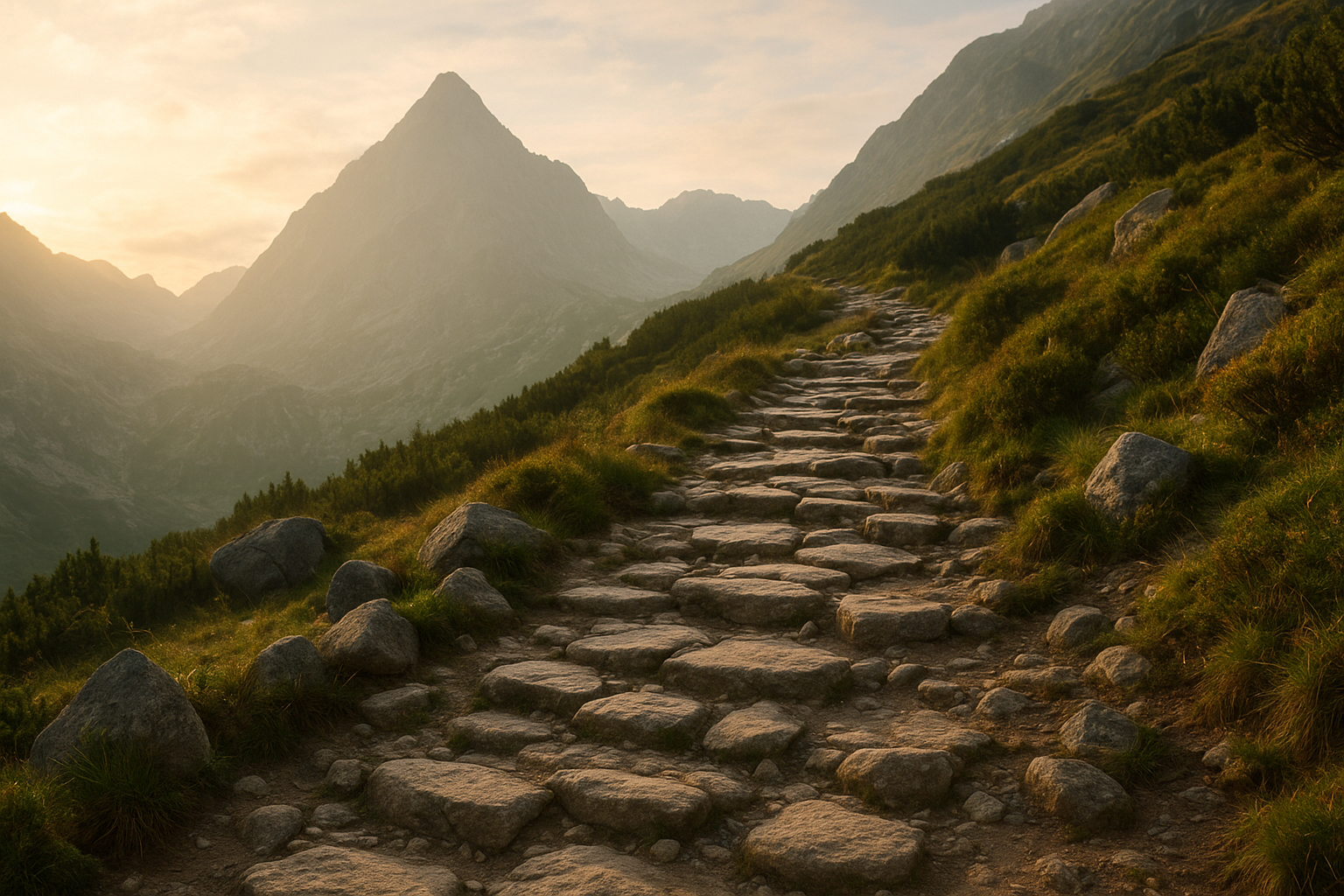In the heart of Japan, amidst the silent whisper of pine trees and the ruggedness of unyielding cliffs, lies the Zen path up the revered Mount Koya. This path, winding and steep, is more than just a trail to a picturesque summit. It is a metaphorical journey towards enlightenment, a step-by-step process of awakening that has captured the imagination of many spiritual seekers.
The Journey Begins
Every journey up the mountain begins with a single step, much like every journey towards enlightenment. The Zen philosophy teaches us that true enlightenment is not a sudden revelation but rather a gradual awakening, achieved through persistent practice and awareness. The act of climbing, one step at a time, encourages practitioners to focus on the ‘now’, to be present and mindful of each movement.
“The only Zen you find on the tops of mountains is the Zen you bring up there.” – Robert M. Pirsig
Meditation, an integral part of Zen practice, finds a perfect partner in the act of walking up a mountain. Many who embark on this pilgrimage engage in walking meditation, a practice that combines the physical act of walking with meditative awareness. This activity demands concentration on the rhythm of footsteps, the breath, and the sensations of the body.
Lessons of the Path
- Acceptance of the Present: The mountain path compels acceptance of the present. The challenges of the climb mirror the difficulties of life, teaching us to accept situations with grace and patience.
- Perseverance: Like life, the mountain presents obstacles. Each step requires endurance and resilience—a lesson in perseverance.
- Humility: The vastness of the mountain against our human scale induces a humility in the climber, fostering a greater sense of interconnectedness with the world.
Nature’s Silence and the Inner Voice
As one ascends further up the path, the noise of the world falls away. This departure from the mundane allows climbers to tune into their inner voice. In Zen, this is a crucial aspect of understanding one’s Buddha-nature. The silence of nature is profound, encouraging introspection and self-awareness.
Zen monks have long used secluded environments, such as mountains, to cultivate a deeper understanding of their own minds. The great Zen master Dogen Zenji once said, “To study Buddhism is to study the self. To study the self is to forget the self.” The mountains become a student’s life-long mentor, revealing the secrets of the self to those who are willing to listen.
Reaching the Summit
Arriving at the summit of Mount Koya, climbers are rewarded not just with breathtaking views but with the profound satisfaction of having completed a spiritual journey. This summit is not the end but rather another beginning—a place to reflect on the journey and prepare for the descent.
In Zen, the descent is as important as the climb. It symbolizes bringing the gained insights and wisdom back to the ordinary world. The essence of Zen practice lies in carrying the peace of the mountains into the bustle of everyday life.
Conclusion
The Zen of the mountain path is a potent reminder of life’s ephemeral nature. It teaches us the value of each step, the importance of the journey over the destination, and the endless process of awakening that life itself presents. As with any good Zen practice, it encourages one to be at peace with the path beneath their feet, no matter how rocky it may be. In the eloquent words of Jack Kerouac, from his writings in The Dharma Bums, “One day I will find the right words, and they will be simple.” The mountain path gives us a glimpse into that simplicity through each deliberate, mindful step.
